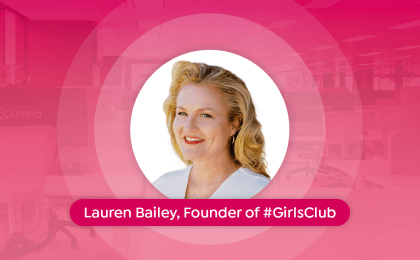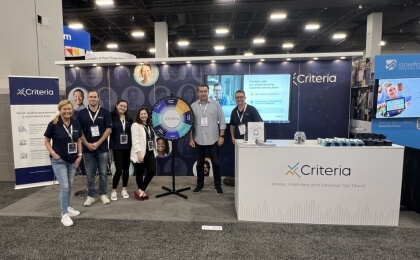Hiring diverse teams is crucial for bridging opportunity gaps and building successful companies, yet the process for identifying and hiring diverse top talent is often riddled with biases. In particular, interviewer bias is one of the biggest obstacles in this process.
Interviewer bias occurs when an interviewer, who is influenced by their unconscious biases, makes subtle assumptions about a candidate. These biases can make the interview process less objective and lead interviewers to make biased and inaccurate hiring decisions.
Mitigating interviewer bias is important because it can interfere with identifying top talent from diverse backgrounds, which research has shown is a major competitive advantage for top-performing companies. A recent McKinsey study found that diverse companies are 35% more likely to generate financial returns above their industry medians. Unchecked biases can also maintain unfair hiring practices that prevent applicants from underrepresented backgrounds from being hired.
With stakes this high, it is important for organizations to be committed to fair and equitable hiring practices. Here are some tips to help your hiring teams reduce interviewer bias:
1. Hire D&I Specialists
Hiring a D&I specialist is a great way to reinforce your company’s commitment to equitable hiring. More and more companies have added D&I specialists to carry out results. Between August 2018 and August 2019, online postings for D&I jobs rose by 30% in the US. Beyond helping your team identify and work through existing interview biases, a D&I specialist can also help develop new strategies for fair recruitment, such as helping write inclusive job descriptions and building a more inclusive company culture.
2. Diversify Your Interviewer Panel
Putting together diverse interviewer panels can demonstrate your company’s commitment to diversity to prospective candidates. It creates a more inclusive hiring experience, and it can also help drastically reduce in-group favoritism, which occurs when interviewers unconsciously favor candidates who are “like them.”
In 2014, Intel attempted to reduce in-group favoritism by requiring that at least two members of underrepresented communities be present in their hiring panels. The result? Recruitment of diverse new hires increased by about 50%, with new hire representation increasing from 31.9% to 45.1% in just two years.
3. Be Mindful of The Halo Effect
Psychology Today defines the Halo Effect as “a cognitive bias that occurs when an initial positive judgment about a person unconsciously colors the perception of the individual as a whole.” In the hiring space, this can come into play when an interviewer forms an impression of someone within the first few seconds of an interview.
One popular example of the Halo Effect was in the hiring of musicians by top orchestras. In 1970, women made up just 6% of musicians in top orchestras, who at the time were hired in-person. Male orchestra candidates were assumed to be more talented simply because they were male, and this led judges to perceive them as more talented during their auditions. To counteract these results, many orchestras started conducting “blind” auditions where candidates move further along the hiring pipeline based on the sound of their talent alone. After implementing these changes, the proportion of female musicians in the top-five orchestras increased from 6% to 21%.
In sum, if you want your hiring teams to recruit from an objective mindset, recruiters and hiring managers need to question their biases and dig deeply into why they like certain candidates over others.
4. Reconsider Hiring Based On “Culture Fit”
Evaluating a candidate’s cultural fit to a team can often lead to unfair hiring. Many times, the term is employed without any clear and objective metrics, which gives more power to our conscious and unconscious biases to form decisions for us.
Instead of looking for a candidate that “fits” your culture, consider a candidate that adds to your culture. These types of candidates add new backgrounds, perspectives, and ideas to your team, which ultimately help your organization perform better. In addition, seeking “culture added” hires opens your pool to candidates who may have been excluded by “culture fit” biases.
5. Reduce Hiring Bias With Pre-Employment Assessments
So how do you objectively assess if a candidate is right for a role? Incorporating pre-employment assessments into your hiring method can be an effective and valuable practice.
Pre-employment assessments evaluate a candidate’s skills, personality, and aptitude to help you find the best fit for your company. Well-validated assessments provide powerful, objective insights that your hiring team can then analyze and compare across candidates to ultimately make a more informed hiring decision. Best of all, these tests reduce human bias that may occur if these traits were evaluated in an interview.
By implementing pre-employment assessments into your recruitment process, you take a huge step to ensure equitable hiring and ultimately work towards building a diverse team that is set for success.





